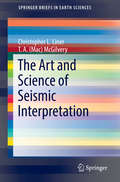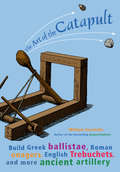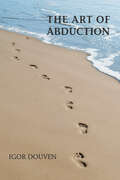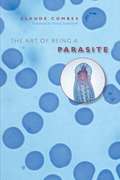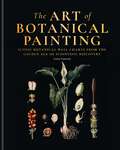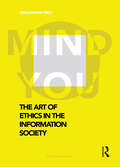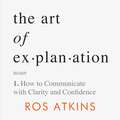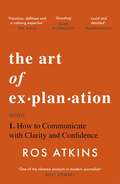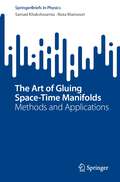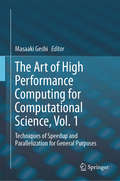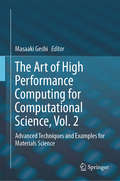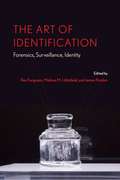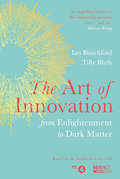- Table View
- List View
The Art and Science of Seismic Interpretation (SpringerBriefs in Earth Sciences)
by Christopher L. Liner T. A. McGilveryThis book demystifies that art and science of seismic interpretation for those with and without formal geophysical training. From geologists to managers and investors, The Art and Science of Seismic Interpretation is a guide to what seismic data is, how it is interpreted, and what it can deliver.
The Art and Science of Seismic Interpretation (SpringerBriefs in Earth Sciences)
by Christopher L. Liner T. A. McGilveryThis book demystifies that art and science of seismic interpretation for those with and without formal geophysical training. From geologists to managers and investors, The Art and Science of Seismic Interpretation is a guide to what seismic data is, how it is interpreted, and what it can deliver.
The Art of Catapult: Build Greek Ballistae, Roman Onagers, English Trebuchets, and More Ancient Artillery
by William GurstelleWhether playing at defending their own castle or simply chucking pumpkins over a fence, wannabe marauders and tinkerers will become fast acquainted with Ludgar, the War Wolf, Ill Neighbor, Cabulus, and the Wild Donkey--ancient artillery devices known commonly as catapults. Building these simple yet sophisticated machines introduces fundamentals of math and physics using levers, force, torsion, tension, and traction. Instructions and diagrams illustrate how to build seven authentic working model catapults, including an early Greek ballista, a Roman onager, and the apex of catapult technology, the English trebuchet. Additional projects include learning how to lash and make rope and how to construct and use a hand sling and a staff sling. The colorful history of siege warfare is explored through the stories of Alexander the Great and his battle of Tyre; Saladin, Richard the Lionheart, and the Third Crusade; pirate-turned-soldier John Crabbe and his ship-mounted catapults; and Edward I of England and his battle against the Scots at Stirling Castle.
The Art of Abduction
by Igor DouvenA novel defense of abduction, one of the main forms of nondeductive reasoning.With this book, Igor Douven offers the first comprehensive defense of abduction, a form of nondeductive reasoning. Abductive reasoning, which is guided by explanatory considerations, has been under normative pressure since the advent of Bayesian approaches to rationality. Douven argues that, although it deviates from Bayesian tenets, abduction is nonetheless rational. Drawing on scientific results, in particular those from reasoning research, and using computer simulations, Douven addresses the main critiques of abduction. He shows that versions of abduction can perform better than the currently popular Bayesian approaches—and can even do the sort of heavy lifting that philosophers have hoped it would do. Douven examines abduction in detail, comparing it to other modes of inference, explaining its historical roots, discussing various definitions of abduction given in the philosophical literature, and addressing the problem of underdetermination. He looks at reasoning research that investigates how judgments of explanation quality affect people&’s beliefs and especially their changes of belief. He considers the two main objections to abduction, the dynamic Dutch book argument, and the inaccuracy-minimization argument, and then gives abduction a positive grounding, using agent-based models to show the superiority of abduction in some contexts. Finally, he puts abduction to work in a well-known underdetermination argument, the argument for skepticism regarding the external world.
The Art of Astrophotography
by Ian MorisonIn The Art of Astrophotography, astronomer and Astronomy Now columnist Ian Morison provides the essential foundations of how to produce beautiful astronomical images. Every type of astroimaging is covered, from images of the Moon and planets, to the constellations, star clusters and nebulae within our Milky Way Galaxy and the faint light of distant galaxies. He achieves this through a series of worked examples and short project walk-throughs, detailing the equipment needed - starting with just a DSLR (digital single lens reflex) camera and tripod, and increasing in complexity as the book progresses - followed by the way to best capture the images and then how, step by step, these may be processed and enhanced to provide results that can rival those seen in astronomical magazines and books. Whether you are just getting into astrophotography or are already deeply involved, Morison's advice will help you capture and create enticing astronomical images.
The Art of Being a Parasite
by Claude CombesParasites are a masterful work of evolutionary art. The tiny mite Histiostoma laboratorium, a parasite of Drosophila, launches itself, in an incredible display of evolutionary engineering, like a surface-to-air missile at a fruit fly far above its head. Gravid mussels such as Lampsilis ventricosa undulate excitedly as they release their parasitic larval offspring, conning greedy predators in search of a tasty meal into hosting the parasite.The Art of Being a Parasite is an extensive collection of these and other wonderful and weird stories that illuminate the ecology and evolution of interactions between species. Claude Combes illustrates what it means to be a parasite by considering every stage of its interactions, from invading to reproducing and leaving the host. An accessible and engaging follow-up to Combes's Parasitism, this book will be of interest to both scholars and nonspecialists in the fields of biodiversity, natural history, ecology, public health, and evolution.
The Art of Being a Scientist
by Roel Snieder Ken LarnerThis is a hands-on guide for graduate students and young researchers wishing to perfect the practical skills needed for a successful research career. By teaching junior scientists to develop effective research habits, the book helps to make the experience of graduate study a more efficient and rewarding one. This book is an outgrowth of the notes for the graduate course, "The Art of Science," taught by the authors at Colorado School of Mines and highly rated and appreciated by students over the years. A sample curriculum, which parallels the curriculum followed in the authors' course, is available in the book as Appendix B, and as an online resource. This sample is offered as a possible starting point for instructors in graduate schools wanting to teach a similar course at their university. Topics covered in the book include: choosing a research topic, department, and advisor; making workplans; the ethics of research; using scientific literature; perfecting oral and written communication; publishing papers; writing proposals; managing time effectively; and planning a scientific career and applying for jobs in research and industry. The wealth of advice is invaluable to students, junior researchers and mentors in all fields of science, engineering, and the humanities.
The Art of Botanical Painting: Art from the golden age of scientific discovery
by Anna LaurentDiscover the wonders of the natural world with this beautiful collection of botanical paintings from around the globe.The opening of the 19th century ushered in an age of unprecedented scientific discovery and artistry. As the development of the microscope allowed scientists access to a previously unimaginable world in miniature, and naturalists travelling the globe sent home reports of weird and wonderful species, there was a growing desire for knowledge of the natural world.Through the medium of popular botanical wall charts, botanical drawing and painting was able to bring this new area of exploration out of the elite salons and universities and into classrooms and homes.This book is a celebration of these botanical wall charts, and the fantastic convergence of art and science they represent. With the artworks taking centre stage, accompanied by text that gives insight into the historical, botanical and artistic context, this unique collection will delight and fascinate botanists, devotees of beautiful vintage illustration, and all with an interest in the natural world.
The Art of Botanical Painting: Art from the golden age of scientific discovery
by Anna LaurentDiscover the wonders of the natural world with this beautiful collection of botanical paintings from around the globe.The opening of the 19th century ushered in an age of unprecedented scientific discovery and artistry. As the development of the microscope allowed scientists access to a previously unimaginable world in miniature, and naturalists travelling the globe sent home reports of weird and wonderful species, there was a growing desire for knowledge of the natural world.Through the medium of popular botanical wall charts, botanical drawing and painting was able to bring this new area of exploration out of the elite salons and universities and into classrooms and homes.This book is a celebration of these botanical wall charts, and the fantastic convergence of art and science they represent. With the artworks taking centre stage, accompanied by text that gives insight into the historical, botanical and artistic context, this unique collection will delight and fascinate botanists, devotees of beautiful vintage illustration, and all with an interest in the natural world.
The Art of Carbohydrate Analysis (Techniques in Life Science and Biomedicine for the Non-Expert)
by Gerrit J. GerwigThe growing importance of glycobiology and carbohydrate chemistry in modern biotechnology and the pharmaceutical industry makes accurate carbohydrate analysis indispensable. This book provides the principles and protocols of various fundamental carbohydrate analysis methods. Choice of method is entirely dependent upon the type of material being investigated (biological samples, food products, etc.), and the level of structural detail required, i.e. sugar content, compositional analysis, linkages between the sugar components, or the total chemical structure of a given molecule. Full structural characterization of carbohydrate chains requires significant time, resources, and skill in several methods of analysis; no single technique can address all glycan analysis needs.This book summarizes several existing analytical techniques (both chemical and physical) in an introductory volume designed for the non-expert researcher or novice scientist. While background in carbohydrate chemistry is assumed, all information necessary to understanding the described techniques is addressed in the text.
The Art of Curiosity: Fifty Visionary Artists, Scientists, Poets, Makers, and Dreamers Who Are Changing the Way We See Our World
by ExploratoriumFifty of the world’s most creative people share their stories and inspirations in this volume created by the Exploratorium science museum.What do music visionary Brian Eno, kinetic sculptor Theo Jansen, science writer Mary Roach, Mythbuster Adam Savage, and Pulitzer-winning journalist Thomas Friedman have in common? They are all game-changers: scientists, artists, entertainers, and activists who revolutionized their fields with bold new perspectives and approaches—and they all had transformative, course-setting experiences at the Exploratorium science museum, the San Francisco landmark visited by a million people a year in person and by millions more online.Join them and forty-five more brilliant thinkers and doers in a wonderfully playful, insightful, and sometimes incredibly moving journey to see how you, too, can harness your powers of observation, inquiry, and engagement to be the change you want to see in the world—regardless of who you are or what you do. Interviewees and subjects include:Oscar-Winning Sound Designer Walter Murch on observationLaurie Anderson on art as a way of knowingMemory Expert Elizabeth Loftus on how we learnOliver Sacks on perceptionMary Roach on how she learned to ask the right questionsAdam Savage on the fun of finding things outMickey Hart on the art of playing to learn, and learning to playCalifornia Governor Gavin Newsom on the importance of scienceCommunity activist Randy Carter on finding joy in the worst of places . . . and dozens more interviews, insights, and activities suggested by artists, scientists, poets, and politicians, in a book that can help you become more creative—and maybe just change the world.
The Art of Digital Orchestration
by Sam McGuire Zbyněk MatějůThe Art of Digital Orchestration explores how to replicate traditional orchestration techniques using computer technology, with a focus on respecting the music and understanding when using real performers is still the best choice. Using real-world examples including industry-leading software and actual sounds and scores from films, VR/AR, and games, this book takes readers through the entire orchestration process, from composition to instruments, performance tools, MIDI, mixing, and arranging. It sheds light on the technology and musical instrument foundation required to create realistic orchestrations, drawing on decades of experience working with virtual instruments and MIDI. Bringing together the old and new, The Art of Digital Orchestration is an excellent resource for anyone using software to write or compose music. The book includes access to online videos featuring orchestration techniques, MIDI features, and instrument demonstrations.
The Art of Drug Synthesis
by Jie Jack Li Douglas S. JohnsonThe Art of Drug Synthesis illustrates how chemistry, biology, pharmacokinetics, and a host of other disciplines come together to produce successful medicines. The authors have compiled a collection of 21 representative categories of drugs, from which they have selected as examples many of the best-selling drugs on the market today. An introduction to each drug is provided, as well as background to the biology, pharmacology, pharmacokinetics, and drug metabolism, followed by a detailed account of the drug synthesis.Edited by prominent scientists working in drug discovery for PfizerMeets the needs of a growing community of researchers in pharmaceutical R&DProvides a useful guide for practicing pharmaceutical scientists as well as a text for medicinal chemistry studentsAn excellent follow-up to the very successful first book by these editors, Contemporary Drug Synthesis, but with all new therapeutic categories and drugs discussed.
The Art of Ethics in the Information Society: Mind You
by Liisa JanssensNew technologies are often implemented before their ethical consequences have been fully understood. In this volume, experts working in the sciences, arts, and philosophy of technology share novel perspectives on how we can best identify and navigate the new ethical crossroads emerging in our information society. With an eye toward the future, the contributors present an essential and unique view on the interplay between ethics and modern technology.
The Art of Explanation: How to Communicate with Clarity and Confidence
by Ros AtkinsA practical and accessible guide to getting across complex information clearly, by BBC presenter and journalist Ros Atkins, creator of the viral 'Ros Atkins on...' explainer videos.Explanation - conveying meaning - is an art. And the BBC presenter and journalist Ros Atkins, creator of the viral 'Ros Atkins on...' explainer videos, is something of a master of the form. In this book, Ros shares the secrets he has learned from years of working in high-pressure newsrooms, identifying the ten elements of a good explanation and the seven steps you need to take to express yourself as persuasively and accurately as possible.Whether you need to articulate your thoughts clearly for business, educational or social purposes, The Art of Explanation is a must-listen for anyone who wants to improve their communication skills.(P) 2023 Headline Publishing Group Ltd
The Art of Explanation: How to Communicate with Clarity and Confidence
by Ros Atkins'For all those who want their audiences to listen and understand' JEREMY BOWEN | 'Precision, deftness and a calming expertise' THE TIMES Do you worry about holding people's attention during presentations?Are you unsure where to start when faced with writing an essay or report?Are you preparing for an interview and wondering how to get all your points across?Explanation - identifying and communicating what we want to say - is an art. And the BBC presenter and journalist Ros Atkins, creator of the viral 'Ros Atkins on...' explainer videos, is something of a master of the form. In this book, Ros shares the secrets he has learned from years of working in high-pressure newsrooms, identifying the ten elements of a good explanation and the seven steps you need to take to express yourself with clarity and impact.Whether at work, school, university or home, we all benefit from being able to articulate ourselves clearly. Filled with practical examples, The Art of Explanation is a must-read for anyone who wants to sharpen their communication skills.
The Art of Explanation: How to Communicate with Clarity and Confidence
by Ros Atkins'For all those who want their audiences to listen and understand' JEREMY BOWEN | 'Precision, deftness and a calming expertise' THE TIMES Do you worry about holding people's attention during presentations?Are you unsure where to start when faced with writing an essay or report?Are you preparing for an interview and wondering how to get all your points across?Explanation - identifying and communicating what we want to say - is an art. And the BBC presenter and journalist Ros Atkins, creator of the viral 'Ros Atkins on...' explainer videos, is something of a master of the form. In this book, Ros shares the secrets he has learned from years of working in high-pressure newsrooms, identifying the ten elements of a good explanation and the seven steps you need to take to express yourself with clarity and impact.Whether at work, school, university or home, we all benefit from being able to articulate ourselves clearly. Filled with practical examples, The Art of Explanation is a must-read for anyone who wants to sharpen their communication skills.
The Art of Forgetting
by Ivan IzquierdoHow do we forget? Why do we need to forget? This book intends to answer to these and other questions. It aims to demonstrate that each one is who it is due to their own memories. Thus, distinguish between the information we should keep from those we should forget is an difficult art. In this book, the author discusses about the different types of memory, the main types of forgetting (avoidance, extinction and repression), their brain areas and their mechanisms. In this sense, the art of forgetting, or the art of do not saturate our memory mechanisms, is something innate, that benefits us anonymously, keeping us from sinking amidst our own memories. The essays that compose this book go through several aspects, since individuals to societies' memory. By the end of the book, the reader will be able to understand that we forget to be able to think, to live and to survive.
The Art of Gluing Space-Time Manifolds: Methods and Applications (SpringerBriefs in Physics)
by Reza Mansouri Samad KhakshourniaThis concise book reviews methods used for gluing space-time manifolds together. It is therefore relevant to theorists working on branes, walls, domain walls, concepts frequently used in theoretical cosmology, astrophysics, and gravity theory. Nowadays, applications are also in theoretical condensed matter physics where Riemannian geometry appears. The book also reviews the history of matching conditions between two space-time manifolds from the early times of general relativity up to now.
The Art of High Performance Computing for Computational Science, Vol. 1: Techniques of Speedup and Parallelization for General Purposes
by Masaaki GeshiThis book provides basic and practical techniques of parallel computing and related methods of numerical analysis for researchers who conduct numerical calculation and simulation. Although the techniques provided in this book are field-independent, these methods can be used in fields such as physics, chemistry, biology, earth sciences, space science, meteorology, disaster prevention, and manufacturing. In particular, those who develop software code in these areas will find this book useful. The contents are suitable for graduate students and researchers in computational science rather than novices at programming or informed experts in computer science.Starting with an introduction to the recent trends in computer architecture and parallel processing, Chapter 1 explains the basic knowledge of speedup programs with simple examples of numerical computing. Chapters 2 – 4 detail the basics of parallel programming, the message passing interface (MPI), and OpenMP and discuss hybrid parallelization techniques. Showing an actual example of adaptation, Chapter 5 gives an overview of performance tuning and communication optimizations. To deal with dense matrix calculations, Chapter 6 details the basics and practice of linear algebra calculation libraries BLAS and LAPACK, including some examples that can be easily reproduced by readers using free software. Focusing on sparse matrix calculations, Chapter 7 explains high performance algorithms for numerical linear algebra. Chapter 8 introduces the fast Fourier transform in large-scale systems from the basics. Chapter 9 explains optimization and related topics such as debug methods and version control systems. Chapter 10 discusses techniques for increasing computation accuracy as an essential topic in numerical calculation. This is the first of the two volumes that grew out of a series of lectures in the K computer project in Japan. The second volume will focus on advanced techniques and examples of applications in materials science.
The Art of High Performance Computing for Computational Science, Vol. 2: Advanced Techniques and Examples for Materials Science
by Masaaki GeshiThis book presents advanced and practical techniques for performance optimization for highly parallel processing. Featuring various parallelization techniques in material science, it is a valuable resource for anyone developing software codes for computational sciences such as physics, chemistry, biology, earth sciences, space science, weather, disaster prevention and manufacturing, as well as for anyone using those software codes.Chapter 1 outlines supercomputers and includes a brief explanation of the history of hardware. Chapter 2 presents procedures for performance evaluation, while Chapter 3 describes the set of tuned applications in materials science, nanoscience and nanotechnology, earth science and engineering on the K computer. Introducing the order-N method, based on density functional theory (DFT) calculation, Chapter 4 explains how to extend the applicability of DFT to large-scale systems by reducing the computational complexity. Chapter 5 discusses acceleration and parallelization in classical molecular dynamics simulations, and lastly, Chapter 6 explains techniques for large-scale quantum chemical calculations, including the order-N method. This is the second of the two volumes that grew out of a series of lectures in the K computer project in Japan. The first volume addresses more basic techniques, and this second volume focuses on advanced and concrete techniques.
The Art of Identification: Forensics, Surveillance, Identity (AnthropoScene)
by Rex Ferguson, Melissa M. Littlefi eld and James PurdonSince the mid-nineteenth century, there has been a notable acceleration in the development of the techniques used to confirm identity. From fingerprints to photographs to DNA, we have been rapidly amassing novel means of identification, even as personal, individual identity remains a complex chimera. The Art of Identification examines how such processes are entangled within a wider sphere of cultural identity formation.Against the backdrop of an unstable modernity and the rapid rise and expansion of identificatory techniques, this volume makes the case that identity and identification are mutually imbricated and that our best understanding of both concepts and technologies comes through the interdisciplinary analysis of science, bureaucratic infrastructures, and cultural artifacts. With contributions from literary critics, cultural historians, scholars of film and new media, a forensic anthropologist, and a human bioarcheologist, this book reflects upon the relationship between the bureaucratic, scientific, and technologically determined techniques of identification and the cultural contexts of art, literature, and screen media. In doing so, it opens the interpretive possibilities surrounding identification and pushes us to think about it as existing within a range of cultural influences that complicate the precise formulation, meaning, and reception of the concept.In addition to the editors, the contributors to this volume include Dorothy Butchard, Patricia E. Chu, Jonathan Finn, Rebecca Gowland, Liv Hausken, Matt Houlbrook, Rob Lederer, Andrew Mangham, Victoria Stewart, and Tim Thompson.
The Art of Identification: Forensics, Surveillance, Identity (AnthropoScene: The SLSA Book Series #9)
by Rex Ferguson, Melissa M. Littlefi eld and James PurdonSince the mid-nineteenth century, there has been a notable acceleration in the development of the techniques used to confirm identity. From fingerprints to photographs to DNA, we have been rapidly amassing novel means of identification, even as personal, individual identity remains a complex chimera. The Art of Identification examines how such processes are entangled within a wider sphere of cultural identity formation.Against the backdrop of an unstable modernity and the rapid rise and expansion of identificatory techniques, this volume makes the case that identity and identification are mutually imbricated and that our best understanding of both concepts and technologies comes through the interdisciplinary analysis of science, bureaucratic infrastructures, and cultural artifacts. With contributions from literary critics, cultural historians, scholars of film and new media, a forensic anthropologist, and a human bioarcheologist, this book reflects upon the relationship between the bureaucratic, scientific, and technologically determined techniques of identification and the cultural contexts of art, literature, and screen media. In doing so, it opens the interpretive possibilities surrounding identification and pushes us to think about it as existing within a range of cultural influences that complicate the precise formulation, meaning, and reception of the concept.In addition to the editors, the contributors to this volume include Dorothy Butchard, Patricia E. Chu, Jonathan Finn, Rebecca Gowland, Liv Hausken, Matt Houlbrook, Rob Lederer, Andrew Mangham, Victoria Stewart, and Tim Thompson.
The Art of Innovation: From Enlightenment to Dark Matter, as featured on Radio 4
by Ian Blatchford Tilly BlythBased on the landmark Radio 4 series, this beautifully illustrated modern history of the connections between science and art offers a new perspective on what that relationship has contributed to the world around us. __________ Throughout history, artists and scientists have been driven by curiosity and the desire to experiment. Both have wanted to make sense of the world around them, often to change it, sometimes working closely together, certainly taking inspiration from each other's disciplines. The relationship between the two has traditionally been perceived as one of love and hate, fascination and revulsion, symbiotic but antagonistic. But art is crucial to helping us understand our science legacy and science is well served by applying an artistic lens. How exactly has the ingenuity of science and technology been incorporated into artistic expression? And how has creative practice, in turn, stimulated innovation and technological change?The Art of Innovation is a history of the past 250 years viewed through the disciplines of art and science. Through fascinating stories that explore the sometimes unexpected relationships between famous artworks and significant scientific and technological objects - from Constable's cloudscapes and the chemist who first measured changes in air pressure, to the introduction of photography and the representation of natural history in print - it offers a new way of seeing, studying and interpreting the extraordinary world around us.
The Art of Learning: Neural Networks and Education
by Francis T.S. Yu Edward H. Yu Ann G. YuThis book presents the idea that innovative ways of teaching and learning are very essential to retention and growth. Presented in 15 sections, the book starts with the common sense training on education and moves on to neural network operation. Throughout the book, the art of learning, associative, cognitive, and creative learning are stated and defined. Learning simplicity, information content as related to neural network learning are discussed. The author also discusses neural plasticity and adaptability in smarter neural networks. If we know our human brain’s basic abilities and limitation then a better educational methods can be implemented. Presents the idea that innovative ways of teaching and learning are very essential to retention and growth Discusses major differences and constraints between neural network and computer Presents the significances of learning simplicity and information content as related to neural network learning are included Stresses the neural network learning capabilities and limitations and their role in developing more efficient learning techniques
